In the morning, we looked around downtown Wedel. We found a marketplace crowded with shoppers and wagons.
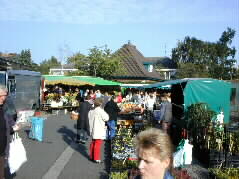
Thee are many kinds of fresh and colorful vegetables on the stalls. They sell flowers such as chrysanthemum, rose, Erica, and others.
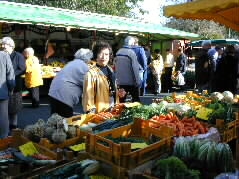
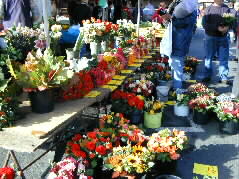
Meat, fish, delicatessen, and sundries fill the market. A florist sells bulbs that count more than 100 species. Shoppers can put them in a plastic tray and got a price tag.
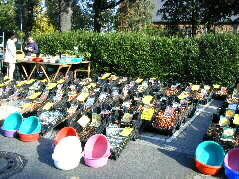
I was lured by the mouth-watering flavor of a Frankfurt sausage shop. I soon tried it. It was very tasty to eat the simple food like this under the blue sky.
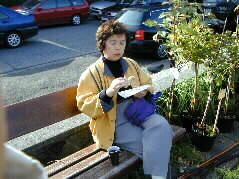
I got in a large florist. Many people wait in line for wrapping. I also see many people who hold flower bouquet in hand. It is a lovely scene. The florist features its beautiful display like this, ground cherries as lantern. We use the flower in a lantern festival in my homeland Oita.
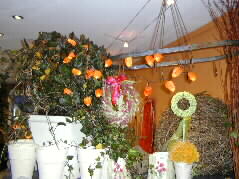
A bakery sells many kinds of breads such as rye bread, pine-seeded, with sesame seed, barley bread, and others.
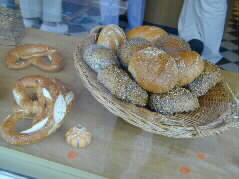
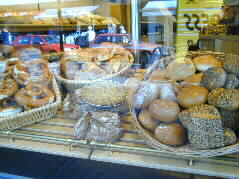
Before noon, Klaus and Kaeko were waiting for us at the hotel for pick up. Kaeko brought me a twig of pink rose. I put it on the doorknob of the back seat together with a leaf of oak. A good reserved seat was completed.

Today, we will head to Luebeck, a UNESCO world cultural heritage town. On our way to the there, we stopped at a rest parking. I tried Schnitzel I haven't eaten yet. It is a kind of fried scallop. Klaus took "Farmer's breakfast", which I sometimes prepare in home. The appearance (leftmost dish) was different from mine, but the taste was just the same as I cook.

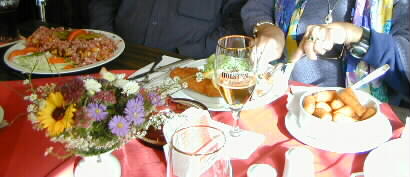
We arrived Luebeck. The Holstein Gate is a symbol mark of the town. As the Gate was too heavy to stand upright on a soft ground, it is slightly tilted even today. Luebeck was built in 1143 as the first Hanseatic city in Germany. The City is surrounded with a canal and Travemuende River and flourished as a trading city along Baltic Sea.

The City Hall is built by black bricks that give an impression of dignity as the leader of the Hanseatic League. The building was built during 13th - 16th century. The oldest building on the left has wind holes on the wall. Every building is beautifully decorated. Some of them were under repair behind the net. People think a great deal of old buildings by always paying many efforts to maintain them. Markt Place paved with beautiful stone blocks is a good place for market and festivals.
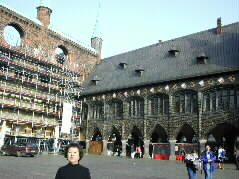
Marienkirche is the most beautiful Gothic church in northern Germany. In the church, I looked up a tall pipe organ in high position. Johann Sebastian Bach had once visited here to listen the sound of the organ, they say. I wish I could hear it next time.
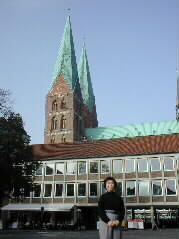
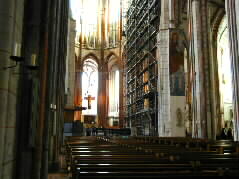
People of Luebeck preserve a shot-and-fell down church bell as it is, so as not to forget the foolish act of mankind during WW2. What a horrible scene it is! Every body should conceive in mind the stupidity of humankind and repent for their deeds.
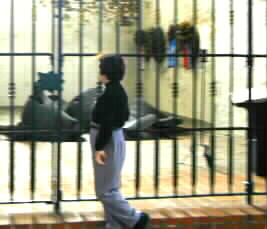
I came across a just married couple outside of the church blessed with relatives and friends. I was relieved by their happy smile.
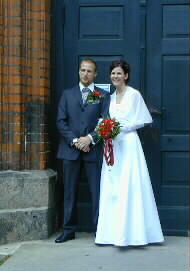
Just a few steps from the church take us to a famous marzipan shop Niederegger. The cookies based on almond chocolate are well known all around the world. In the show window was a miniature of Holstein Gate (left) made of marzipan. There are so many kinds of marzipans in the shop (right.)
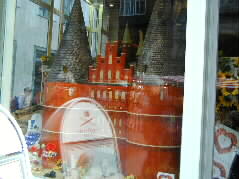
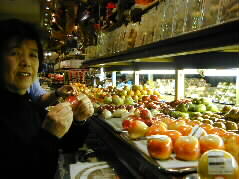
We came again at Markt Place and rest at a restaurant. We could try "raw red wine." It was really tasty with rich aroma anyway. The scattered yellow died leaves on the stone brick realized me that I was in Europe in this moment.
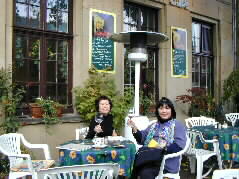
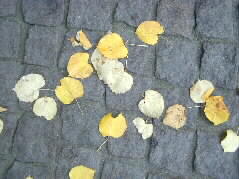
Next stop was a pink colored building called Apartment for widow. It was built in 16th century for the widows of sailors or merchants. The building falls heir to the spirits of the old days. The sign reads, "Please keep quiet here." I was moved and delighted to learn that there was a consideration for welfare like this since far-old days.
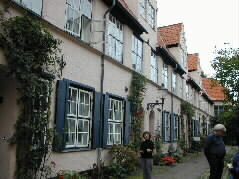
This is the restored house of the grandparents of Thomas and Heinnrich Mann. It is called Buddenbrookhaus named after Thomas Mann's Nobel Laureate in Literature in 1929. The building was under re-painting.
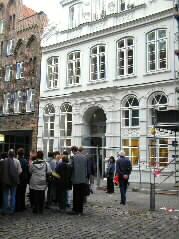
I took a yes-I-visited-here picture in front of the ad of marzipan shop Niederegger with the souvenir bag.
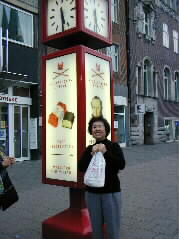
After pleasant time in beautiful Luebeck, we headed to a hotel near Klaus's home. This is the final destination of our travel to Germany this time. I checked in Hotel Am Wind in Grossenbrode facing Baltic Sea. An old army barrack was turned to a clean hotel like this.
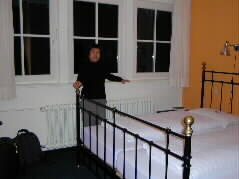
We took dinner in downtown Grossenbrode, a small village with the population about 1,000. Thee are not so many shops here but the town will swell up to double-over population in summer. The fat belly chef stands in the dark to welcome the guests.
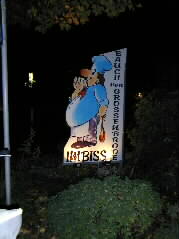
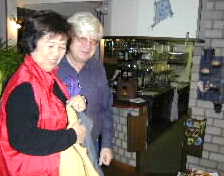
Finally, we visited our destination, Mr. Klaus's house. Unfortunately, I couldn't see around in the darkness. I expect to view the landscape tomorrow. Klaus had once been a high school teacher in Norway and retired recently. He came back homeland Germany, bought this house from his father, and refurbished it. I was served with an unusual dish, smoked eel.
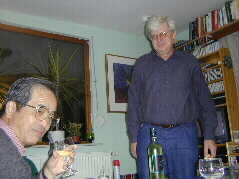
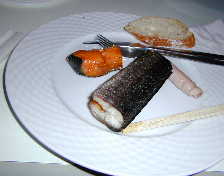
Klaus kindly make me use his computer. Unfortunately, Japanese character set was not installed in it and the shape of connecter on my note PC didn't fit to the wall phone outlet. As it was too late, almost midnight, we said good-bye and were taken back to the hotel by Klaus. Thank you very much Klaus and Kaeko today. We could fully enjoy.
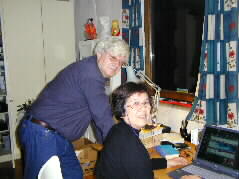
I have been exchanging E-mails more than seven years. I had once wanted to visit Arctic Norway, but this time I could finally visited his house in northern Germany all the way from Orient Japan. I was very delighted.
